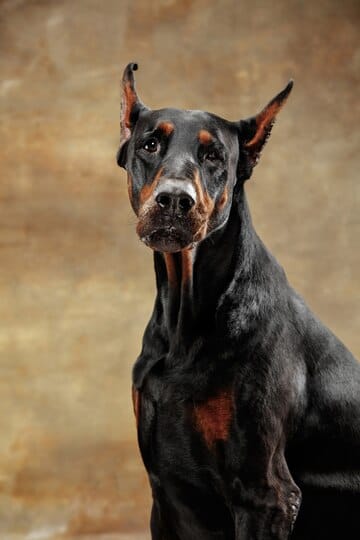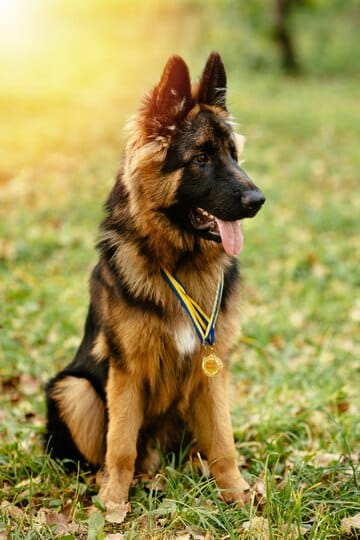Introduction: The Great Doodle Debate 🤔
Picture this: You’re out for a walk with your fluffy, adorable Doodle. A passer-by stops to admire your furry friend and asks, “What kind of dog is that?” You proudly respond, “It’s a Labradoodle!” But then comes the follow-up question that’s sparked countless debates in the dog world: “Oh, so it’s a mutt?”
Cue the confused looks and potential defensiveness. Are Doodles mutts? Or are they something else entirely? This question has been wagging tongues in the canine community for years, and it’s time we sink our teeth into this juicy topic.
In this comprehensive guide, we’ll explore the murky waters of Doodle classification, diving deep into genetics, breed standards, and the very definition of what makes a dog a mutt or a purebred. Whether you’re a proud Doodle parent, a prospective owner, or just a curious dog enthusiast, get ready for a tail-wagging journey through the world of Doodles!
What Exactly is a Mutt? 🐕
Before we can answer whether Doodles are mutts, we need to define what a mutt actually is. Let’s break it down:
Definition of a Mutt:
A mutt, also known as a mixed-breed dog or mongrel, is typically defined as a dog of unknown ancestry or of multiple, diverse breeds.
Key Characteristics of Mutts:
- Mixed heritage
- Often of unknown or uncertain lineage
- Not bred for specific traits
- Unique combinations of physical and behavioral characteristics
The Mutt Spectrum:
It’s important to note that “mutt” isn’t a black-and-white category. There’s a whole spectrum of mixed-breed dogs, from first-generation crosses to dogs with multiple breeds in their ancestry.
The Doodle Distinction: What Makes a Doodle? 🐩
Now that we understand what a mutt is, let’s look at what defines a Doodle:
Definition of a Doodle:
A Doodle is a crossbreed dog that has a Poodle as one of its parents. The other parent can be any number of breeds, leading to various Doodle types.
Common Doodle Breeds:
- Labradoodle (Labrador Retriever + Poodle)
- Goldendoodle (Golden Retriever + Poodle)
- Bernedoodle (Bernese Mountain Dog + Poodle)
- Aussiedoodle (Australian Shepherd + Poodle)
- Schnoodle (Schnauzer + Poodle)
Key Characteristics of Doodles:
- Intentionally bred
- Known parentage
- Often bred for specific traits (like hypoallergenic coats)
- Can be first-generation (F1) or multi-generation crosses
The Genetic Cocktail: Understanding Doodle DNA 🧬
To truly understand whether Doodles are mutts, we need to dive into the world of canine genetics. Let’s break it down:
Purebred Genetics:
- Purebred dogs have a closed gene pool
- They have predictable traits due to generations of selective breeding
- Recognized by kennel clubs with established breed standards
Mixed Breed Genetics:
- Mixed breeds have a more diverse gene pool
- Traits can be less predictable
- Not recognized by traditional kennel clubs
Doodle Genetics:
- Doodles are a deliberate mix of two purebred dogs
- First-generation (F1) Doodles have 50% genes from each parent breed
- Later generations can have more complex genetic makeups
The Designer Dog Dilemma: Are Doodles Designer Dogs? 👜🐕
The term “designer dog” often comes up in discussions about Doodles. But what does it mean, and do Doodles fit the bill?
Definition of Designer Dogs:
Designer dogs are intentional crosses between two purebred dogs, often with a specific purpose in mind (like combining desirable traits from both breeds).
Characteristics of Designer Dogs:
- Intentionally bred
- Known parentage
- Often given portmanteau names (e.g., Labradoodle, Cockapoo)
- Bred for specific traits or purposes
Do Doodles Qualify?
Based on this definition, Doodles do indeed fall into the category of designer dogs. They’re intentional crosses with known parentage and are often bred for specific traits like hypoallergenic coats or friendly temperaments.
The Mutt vs. Designer Dog Spectrum 📊
To better understand where Doodles fit, let’s look at a spectrum of dog classifications:
| Purebred | Designer Dog | First-Generation Mix | Multi-Generation Mix | Random Mix (Mutt) |
|---|---|---|---|---|
| Known lineage for many generations | Known purebred parents | Known purebred parents | May have some known ancestry | Unknown or highly mixed ancestry |
| Bred to conform to specific standards | Bred for specific traits | May be accidental or intentional | May be accidental or intentional | Usually accidental breeding |
| Recognized by kennel clubs | Not recognized by major kennel clubs | Not recognized by major kennel clubs | Not recognized by major kennel clubs | Not recognized by major kennel clubs |
As we can see, Doodles fall firmly in the “Designer Dog” category, distinguishing them from random-bred mutts.
The Doodle Identity Crisis: Mutt or Not? 🕵️♀️
So, are Doodles mutts? Let’s break it down:
Arguments for Doodles Being Mutts:
- They are mixed-breed dogs
- They’re not recognized as purebreds by major kennel clubs
- Their traits can be less predictable than purebreds
Arguments Against Doodles Being Mutts:
- They’re intentionally bred for specific traits
- They have known parentage
- They fall into the “designer dog” category
- Many Doodles come from multi-generation breeding programs
The Verdict: It’s Complicated 🤷♂️
The truth is, whether Doodles are considered mutts often depends on who you ask. From a strict genetic standpoint, they are mixed-breed dogs. However, their intentional breeding and known lineage set them apart from randomly bred mutts.
Perhaps the best classification for Doodles is “designer mixed-breed dogs.” This acknowledges both their mixed heritage and their intentional breeding.
The Doodle Distinction: Why It Matters (Or Does It?) 🏆
You might be wondering, “Does it really matter if my Doodle is called a mutt or not?” Let’s explore why this distinction can be important:
1. Health Considerations
- Understanding your Doodle’s genetic background can help predict potential health issues
- Mutts are often thought to have “hybrid vigor,” but intentionally bred Doodles may have health screenings in their lineage
2. Behavioral Expectations
- Knowing your Doodle’s parent breeds can give insights into potential behavioral traits
- This can help with training and meeting your dog’s needs
3. Legal and Insurance Implications
- Some housing or insurance policies have restrictions on certain breeds
- The classification of your dog could potentially impact these situations
4. Emotional Attachment
- Some owners feel a strong connection to their dog’s breed identity
- Understanding your Doodle’s background can enhance this connection
5. Breeding and Ethical Considerations
- The debate around Doodles touches on larger issues of responsible breeding practices
- It raises questions about the ethics of creating new “breeds” vs. adopting mixed-breed dogs
The Doodle Diversity: Not All Doodles Are Created Equal 🌈
It’s important to note that not all Doodles are the same. Let’s break down the different types:
1. F1 Doodles
- First-generation cross between a Poodle and another purebred
- 50% Poodle, 50% other breed
2. F1b Doodles
- Backcross between an F1 Doodle and a Poodle
- 75% Poodle, 25% other breed
3. F2 Doodles
- Cross between two F1 Doodles
- Still 50% Poodle, but with more genetic variability
4. Multi-generation Doodles
- Results of breeding Doodles with Doodles for several generations
- Can have more consistent traits
This diversity within the Doodle world further complicates the “mutt or not” debate.
The Cultural Impact: Doodles in Society 🌍
The rise of Doodles has had a significant impact on dog culture:
- Popularity Surge: Doodles have become incredibly popular, often topping lists of favorite dog types.
- Changing Perceptions: They’ve challenged traditional notions of purebred superiority.
- Allergies and Dogs: Doodles have opened up dog ownership to some people with allergies.
- Breeding Debates: They’ve sparked discussions about responsible breeding practices.
- Celebrity Influence: Many celebrities have Doodles, further boosting their popularity.
The Doodle Dilemma: Pros and Cons 📊
Let’s break down the pros and cons of the Doodle classification debate:
Pros of Considering Doodles as Designer Dogs:
- Recognizes intentional breeding
- Acknowledges known parentage
- Highlights potential for desirable trait combinations
Cons of Considering Doodles as Designer Dogs:
- May encourage irresponsible breeding for profit
- Can lead to unrealistic expectations of trait predictability
- Might diminish the value of adopting mixed-breed shelter dogs
Pros of Considering Doodles as Mutts:
- Emphasizes genetic diversity
- May encourage adoption over purchasing
- Reduces stigma around mixed-breed dogs
Cons of Considering Doodles as Mutts:
- Ignores intentional breeding practices
- May undervalue careful selection of parent breeds
- Could overlook potential health benefits of known lineage
The Future of Doodles: What’s Next? 🔮
As the Doodle debate continues, what might the future hold?
- Breed Recognition: Some Doodle enthusiasts are pushing for recognition as distinct breeds.
- Health Studies: More research into the long-term health of Doodles compared to purebreds and random-bred mutts.
- Breeding Regulations: Potential for more oversight in Doodle breeding practices.
- Genetic Testing: Advancements in genetic testing could provide more insights into Doodle heritage and health.
- Evolving Perceptions: Public opinion on Doodles and designer dogs may continue to shift.
Frequently Asked Questions About Doodle Classification 🤔
Let’s address some common questions:
Q1: Can Doodles ever become a recognized breed?
A1: It’s possible, but it would require many generations of consistent breeding and established breed standards.
Q2: Are all Doodles hypoallergenic?
A2: No, while many Doodles have low-shedding coats, there’s no guarantee of hypoallergenicity.
Q3: Are Doodles healthier than purebreds?
A3: It depends. While mixed breeds can have “hybrid vigor,” health also depends on breeding practices and individual genetics.
Q4: Do Doodles have consistent temperaments?
A4: Temperaments can vary, but many Doodles share traits like intelligence and friendliness from their parent breeds.
Q5: Is it better to adopt a mutt or buy a Doodle?
A5: This is a personal choice. Both options can provide loving companions, but it’s important to consider ethical breeding practices and adoption needs.
Conclusion: Embracing the Doodle, Whatever You Call It 💖
As we wrap up our exploration of the great Doodle debate, one thing is clear: whether you call them mutts, designer dogs, or simply Doodles, these furry friends have captured hearts around the world.
The classification of Doodles as mutts or designer dogs is more than just a matter of semantics. It touches on important issues of genetics, breeding practices, and our relationships with our canine companions. But at the end of the day, what matters most is not the label we put on our dogs, but the love and care we provide them.
Doodles, with their wagging tails, fluffy coats, and loving personalities, remind us that the joy of dog ownership transcends breed categories. They challenge us to think beyond traditional classifications and appreciate dogs for their individual qualities.
So, are Doodles mutts? Are they designer dogs? Perhaps they’re a bit of both, or perhaps they’re in a category all their own. What’s undeniable is that they’re beloved pets, loyal companions, and a fascinating part of the ever-evolving world of dogs.
Whether you’re a proud Doodle parent, a curious dog lover, or somewhere in between, remember this: every dog, regardless of its genetic makeup or breed label, is unique and deserving of love. So hug your Doodle (or any dog) tight, and celebrate the wonderful diversity of the canine world!
Here’s to Doodles – mutts, designer dogs, or whatever you choose to call them. May they continue to bring joy, spark debates, and most importantly, be the loving companions we all adore. 🐾💖































